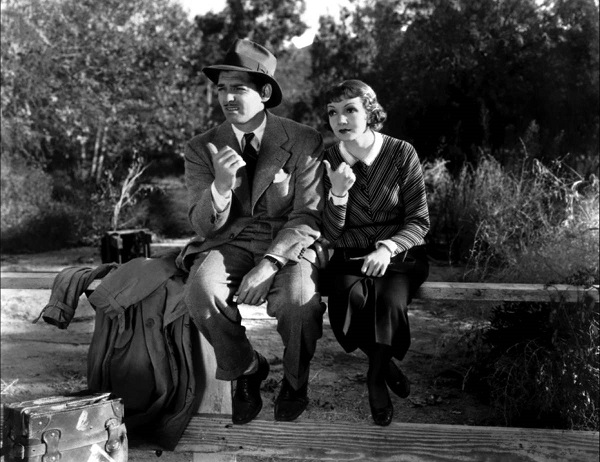This timeline was created based on the life of Mr. George Johnson, an ex-slave once owned the president of the confederate states of America, Jefferson Davis. His interview provided a plethora of information about how enslaved people were treated and about music on plantations. However, as illustrated in the timeline, most of what he considered notable life events came after he left the plantation in 1884.
This was very surprising to me since I expected the interview to mostly focus on his life while enslaved not on his life afterwards. On further examination of the timeline you can also see that Mr. Johnson claimed to have left the plantation almost 20 years after the Civil War ended. This raised two questions: was this simply a matter of an elderly man having difficulty remembering dates or was this a matter of history?
I’m sure many slave owners were reluctant to give up their slaves and held on to them as along as possible. Though I can’t remember being taught anything like that in my history classes. I’m still unsure if this is just a simple mistake made by Mr. Johnson himself, or a problem with the way historians teach us this period in history. This question of how accurate the dates given were made the interview a little less useful than I had hoped.
Making a timeline relies on knowing about when an event happened, but Mr. Johnson was frequently unable to provide a date or gave a range for most events that happened in his life. Most of the time I had to calculate and give the most likely year for the timeline. So, in this aspect the interview was not all that useful, but it was extremely useful when it came to understand the person who was telling their life story.
Mr. Johnson spoke so proudly; he was obviously very proud of what he had accomplished in life. You could hear how passionate he was when he spoke about music. This ability to hear his tone and exact words was amazing. Although I’ll admit I had a hard time understanding what he was saying at certain points. I wasn’t the only one either, when reading the “Note on the Language of the Narratives” I discovered that the people conducting the interviews were also not able to understand the people they interviewed a good amount of the time. This is extremely evident in the transcriptions of the interviews that are missing many things Mr. Johnson had said.
Though the fact that they made an effort to preserve these people’s stories speaks a lot to the social history of the U.S. at the time. As stated in the Slave Narrative Collection opening essay, these interviews were collected during the years 1936 through 1938. To me this shows that people are genuinely taking an interest in what these people went through and want to preserve their stories. I think this really shows the United States effort to preserve our history.
Citations:
“A Note on the Language of the Narratives : Articles and Essays : Born in Slavery: Slave Narratives from the Federal Writers’ Project, 1936-1938 : Digital Collections : Library of Congress.” The Library of Congress. Accessed January 22, 2020. https://www.loc.gov/collections/slave-narratives-from-the-federal-writers-project-1936-to-1938/articles-and-essays/note-on-the-language-of-the-narratives/#note.
“An Introduction to the WPA Slave Narratives : Articles and Essays : Born in Slavery: Slave Narratives from the Federal Writers’ Project, 1936-1938 : Digital Collections : Library of Congress.” The Library of Congress. Accessed January 22, 2020. https://www.loc.gov/collections/slave-narratives-from-the-federal-writers-project-1936-to-1938/articles-and-essays/introduction-to-the-wpa-slave-narratives/.
Lomax, Alan, Elizabeth Lyttleton Sturz, George Johnson, Lewis Wade Jones, Charles Spurgeon Johnson, and John W Work. Interview with George Johnson, Mound Bayou, Mississippi, Septemberpart 1 of 6. Mound Bayou, Mississippi, 1941. Pdf. https://www.loc.gov/item/afc1941002_afs04777a/.
Lomax, Alan, Elizabeth Lyttleton Sturz, George Johnson, Lewis Wade Jones, Charles Spurgeon Johnson, and John W Work. Interview with George Johnson, Mound Bayou, Mississippi, Septemberpart 2 of 6. Mound Bayou, Mississippi, 1941. Pdf. https://www.loc.gov/item/afc1941002_afs04777b/.
Lomax, Alan, Elizabeth Lyttleton Sturz, George Johnson, Lewis Wade Jones, Charles Spurgeon Johnson, and John W Work. Interview with George Johnson, Mound Bayou, Mississippi, Septemberpart 3 of 6. Mound Bayou, Mississippi, 1941. Pdf. https://www.loc.gov/item/afc1941002_afs04778a/.
Lomax, Alan, Elizabeth Lyttleton Sturz, George Johnson, Lewis Wade Jones, Charles Spurgeon Johnson, and John W Work. Interview with George Johnson, Mound Bayou, Mississippi, Septemberpart 4 of 6. Mound Bayou, Mississippi, 1941. Pdf. https://www.loc.gov/item/afc1941002_afs04778b/.
Lomax, Alan, Elizabeth Lyttleton Sturz, George Johnson, Lewis Wade Jones, Charles Spurgeon Johnson, and John W Work. Interview with George Johnson, Mound Bayou, Mississippi, Septemberpart 5 of 6. Mound Bayou, Mississippi, 1941. Pdf. https://www.loc.gov/item/afc1941002_afs04779a/.
Lomax, Alan, Elizabeth Lyttleton Sturz, George Johnson, Lewis Wade Jones, Charles Spurgeon Johnson, and John W Work. Interview with George Johnson, Mound Bayou, Mississippi, Septemberpart 6 of 6. Mound Bayou, Mississippi, 1941. Pdf. https://www.loc.gov/item/afc1941002_afs04779b/.


